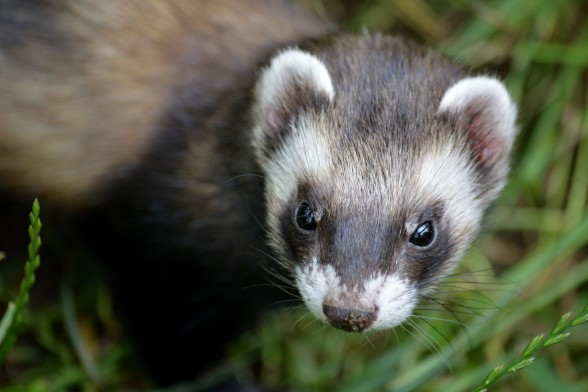
European polecat
Diet
The European polecat is primarily a carnivore and hunts a variety of small animals such as voles, mice, hamsters and rats; in summer it hunts frogs and toads. Much less frequently, the European polecat hunts birds and insects. If food is scarce, it will also eat fruit and carrion.
The European polecat’s predation is shown by the fact that it attacks prey much larger than itself, such as a rabbit. European polecats can raid a chicken coop and bite more birds than they can eat, although some are dragged away to eat later. They mostly make stocks of frogs, which it paralyses with a bite to the rump.
Habitat
Inhabits mainly forest clusters, forest edges, clearings; usually near small water bodies. In winter tends to move closer to human settlements.
Important and interesting facts
Ferrets have a "locking jaw" - the jaw joint is almost a closed hinge, making the jaws almost unbreakable. This feature gives the polecat an unrivalled grip in fighting, hunting and playing.
Like all members of the Mustelidae family, European polecats have anal glands that secrete a pungent-smelling secretion. This reaction occurs when the animal feels threatened.
The main natural enemies are dogs, cats, foxes, raccoons and large birds belonging to the family of Strigiformes.
Information sources: latvijasdaba.lv, Wikipedia
Photos: redzet.eu, pixabay.com
